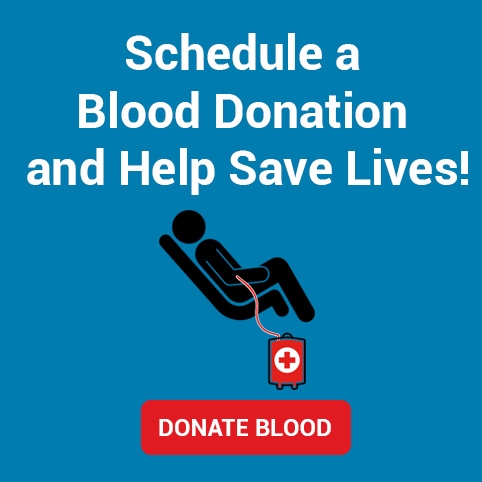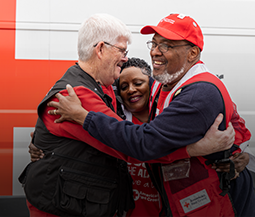If you live in the mid-Atlantic or Northeast regions of the country, it’s time to get the shovels and snow blowers ready as you could possibly see a major winter storm this weekend.
Experts report the storm system will bring heavy rain to the Gulf Coast this week and then develop into snow as it moves north along the East Coast, affecting millions of people from late Saturday into Sunday evening. A significant storm is likely but it’s still too early to zero in on snowfall totals. The I-95 corridor could be the dividing line ─ areas to the north and west could see accumulating snow while areas to the south may see only rain.
While the exact path of the storm is uncertain, weather experts are predicting this storm will be a big one with heavy snow disrupting travel in a number of cities along the East Coast.
WINTER STORM SAFETY
Take immediate precautions if you hear these words on the news:
Winter Storm WARNING: Life-threatening, severe winter conditions have begun or will begin within 24 hours.
Blizzard WARNING: Sustained winds or frequent gusts of 35 miles per hour or greater, plus considerable falling or blowing snow reducing visibility to less than a quarter mile, expected to prevail for three hours or longer.
WIND CHILL Temperature: How cold people and animals feel when outside. The wind chill temperature is not the actual temperature but rather how wind and cold feel on exposed skin.
Winter Storm WATCH: Winter storm conditions possible within the next 36 to 48 hours. Review your winter storm plans and stay informed about weather conditions.
The safest place to be in a winter storm is inside.
Check on relatives, neighbors and friends, particularly if they are elderly or live alone.
Assemble an emergency preparedness kit. Full details here.
Protect pipes from freezing.
Caulk and weather-strip doors and windowsills to keep cold air out. Install storm windows or cover windows with plastic from the inside to provide an extra layer of insulation to keep cold air out.
Make sure you have enough heating fuel on hand. Conserve fuel. Winter storms can last for several days, placing great demand on electric, gas, and other fuel distribution systems (fuel oil, propane, etc.). Lower the thermostat to 65° F (18° C) during the day and to 55° F (13° C) at night. Close off unused rooms, and stuff towels or rags in cracks under the doors. Cover the windows at night.
Stay indoors and wear warm clothes. Layers of loose-fitting, lightweight, warm clothing will keep you warmer than a bulky sweater.
If you must go outside, protect yourself from winter storm hazards:
Wear layered clothing, mittens or gloves, and a hat.
Cover your mouth to protect your lungs from severely cold air. Avoid taking deep breaths; minimize talking.
Watch for signs of hypothermia and frostbite.
Keep dry. Change wet clothing frequently to prevent a loss of body heat..
Avoid overexertion, such as shoveling heavy snow, pushing a vehicle, or walking in deep snow. The strain from the cold and the hard labor may cause a heart attack. Sweating could lead to a chill and hypothermia.
Walk carefully on snowy, icy sidewalks.
Stay off the road if possible during severe weather. If you must drive in winter weather, follow these tips:
A windshield scraper and small broom. A small sack of sand for generating traction under wheels and a set of tire chains or traction mats. Matches in a waterproof container. A brightly colored (preferably red) cloth to tie to the antenna
An emergency supply kit, including warm clothing.
Keep your vehicle’s gas tank full so you can leave right away in an emergency and to keep the fuel line from freezing.
Make sure everyone has their seat belts on and give your full attention to the road.
Don’t follow other vehicles too closely. Sudden stops are difficult on snowy roadways.
Don’t use cruise control when driving in winter weather.
Don’t pass snow plows.
Ramps, bridges and overpasses freeze before roadways.
If you become stranded:
- Stay in the vehicle and wait for help. Do not leave the vehicle to search for assistance unless help is visible within 100 yards (91 meters). You can quickly become disoriented and confused in blowing snow.
- Display a trouble sign to indicate you need help. Hang a brightly colored cloth (preferably red) on the radio antenna and raise the hood after snow stops falling.
- Run the engine occasionally to keep warm. Turn on the engine for about 10 minutes each hour (or five minutes every half hour). Running the engine for only short periods reduces the risk of carbon monoxide poisoning and conserves fuel. Use the heater while the engine is running. Keep the exhaust pipe clear of snow, and slightly open a downwind window for ventilation.
- Leave the overhead light on when the engine is running so that you can be seen.
DOWNLOAD APPS People can download the Red Cross Emergency app for instant access to weather alerts for their area and where loved ones live. Expert medical guidance and a hospital locator are included in the First Aid app in case travelers encounter any mishaps. Both apps are available to download for free in app stores or at redcross.org/apps












